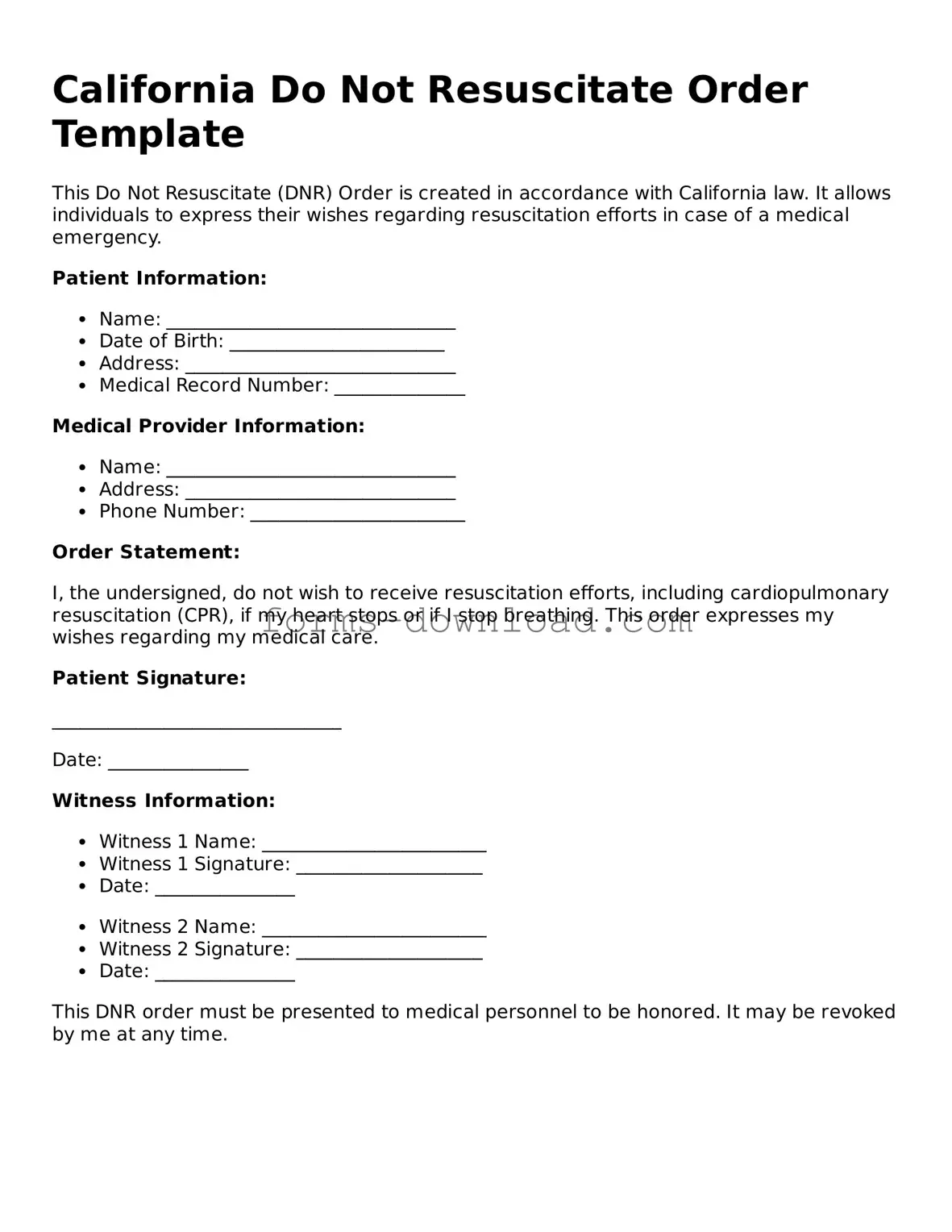California Do Not Resuscitate Order Template
This Do Not Resuscitate (DNR) Order is created in accordance with California law. It allows individuals to express their wishes regarding resuscitation efforts in case of a medical emergency.
Patient Information:
- Name: _______________________________
- Date of Birth: _______________________
- Address: _____________________________
- Medical Record Number: ______________
Medical Provider Information:
- Name: _______________________________
- Address: _____________________________
- Phone Number: _______________________
Order Statement:
I, the undersigned, do not wish to receive resuscitation efforts, including cardiopulmonary resuscitation (CPR), if my heart stops or if I stop breathing. This order expresses my wishes regarding my medical care.
Patient Signature:
_______________________________
Date: _______________
Witness Information:
- Witness 1 Name: ________________________
- Witness 1 Signature: ____________________
- Date: _______________
- Witness 2 Name: ________________________
- Witness 2 Signature: ____________________
- Date: _______________
This DNR order must be presented to medical personnel to be honored. It may be revoked by me at any time.
